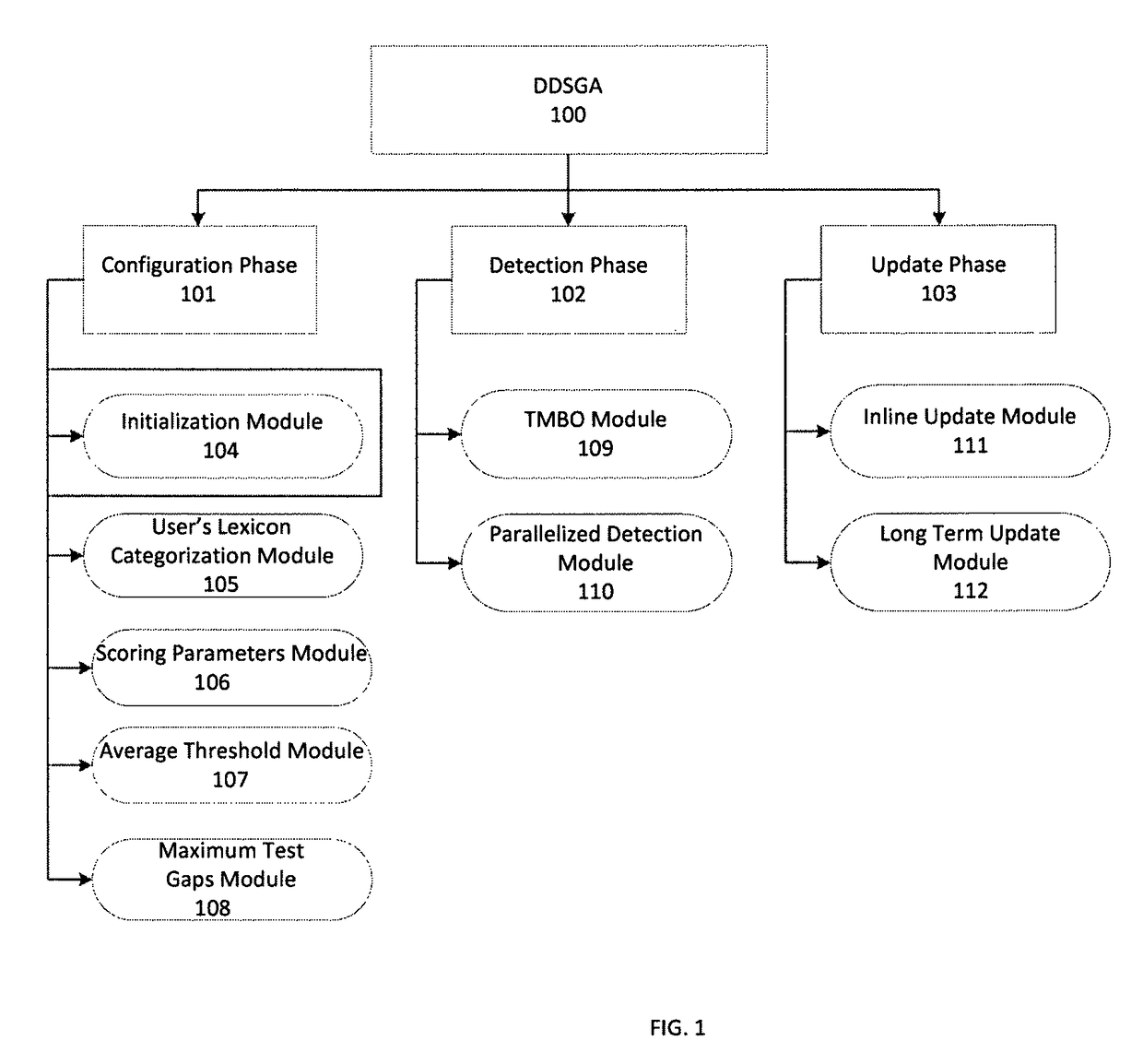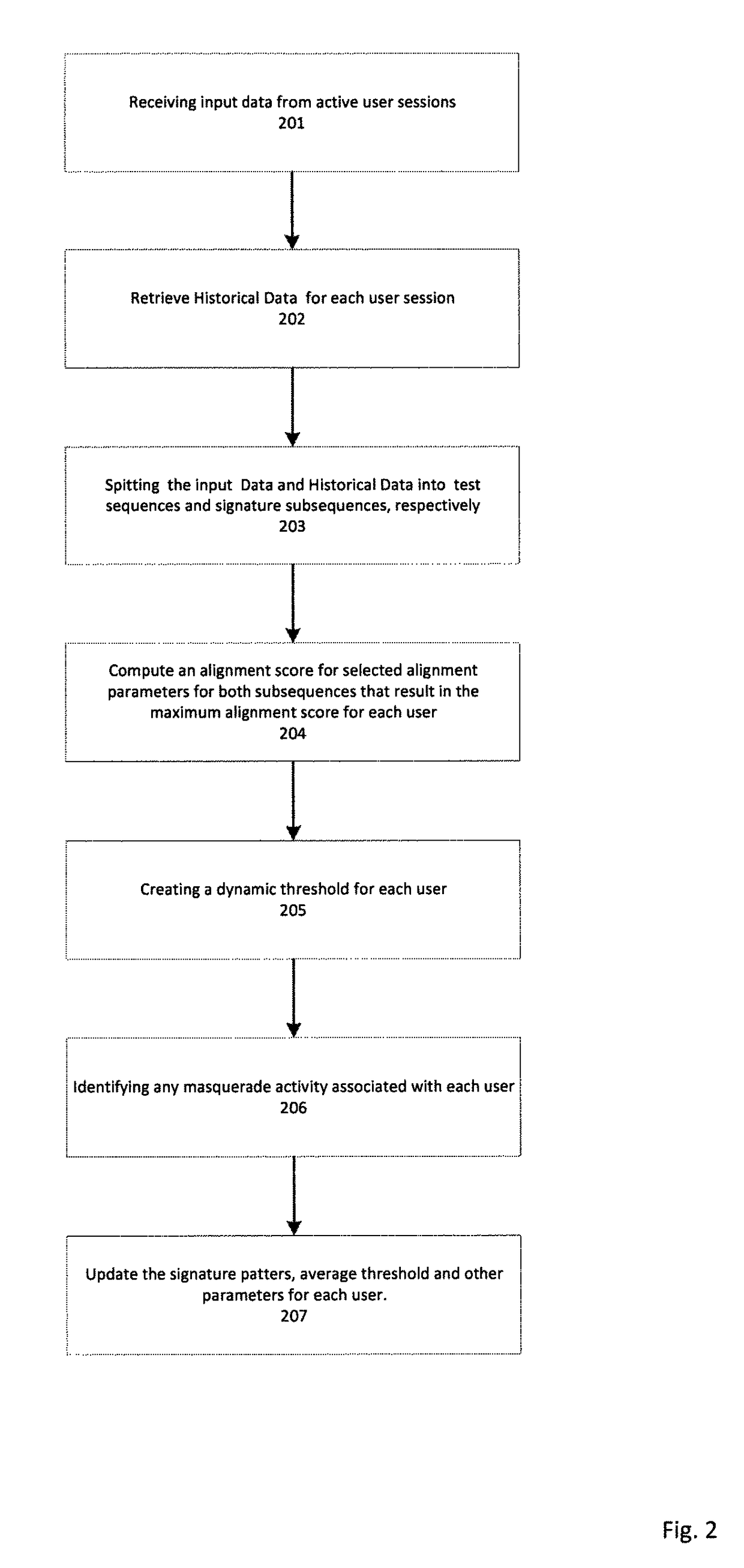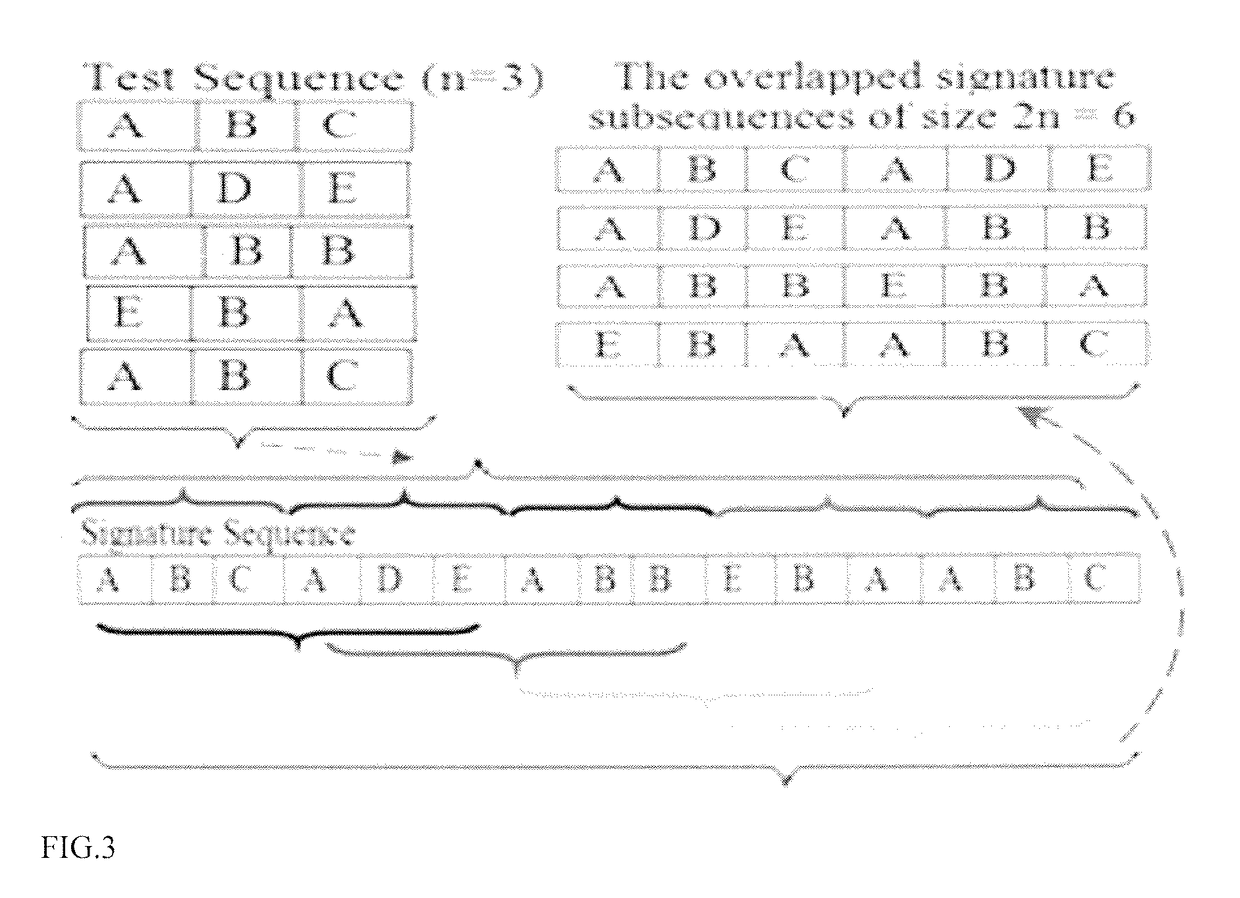Data-driven semi-global alignment technique for masquerade detection in stand-alone and cloud computing systems
a technology of data-driven semi-global alignment and masquerade detection, applied in the direction of electric digital data processing, platform integrity maintenance, instruments, etc., can solve the problems of difficult detection of this type of security breach, leaving an audit trail in the target system's log file, and growing problems for the computer and information system industry
- Summary
- Abstract
- Description
- Claims
- Application Information
AI Technical Summary
Problems solved by technology
Method used
Image
Examples
example 1
[0084]DDSGA 100 may be used to analyze a sample dataset, such as the SEA dataset. The SEA datasets consists of commands and user names collected from UNIX acct audit data. The data describe 50 different users each issuing 15000 commands. The first 5000 commands of each user may be assumed to be genuine. The remaining commands of a user may be split into 100 blocks of 100 commands each. Each block may be seeded with masquerade users, i.e. with commands of other users. There is a 1% probability that a block is a masquerader and, in this case, there is a probability of 80% that the next one is a masquerader as well. As a result, approximately 5% of the test data may be masquerades. It requires about 500,000 operations to test one user session for masquerade attacks with the SEA dataset, because the length of the reference sequence is 5000 while that of the sample sequence is 100. The resulting overhead may be unacceptable in multiuser environments like cloud systems or in computational...
example 2
[0088]The effects of the alignment parameters on the false positive and false negative rates and on the hit ratio and two of the scoring systems for the DDSGA 100 were evaluated with the test and signature blocks of the SEA dataset. A receiver operating characteristic (ROC) curve and the Maxion-Townsend cost function defined in Eq. 10 below were to compare the performance and accuracy of the DDSGA 100 against conventional masquerade detection systems.
Cost=6*False_Positive_Rate+(100−HitRatio) Eq 10
The maximum test gap module 108 was not applied in this example. False positives, false negatives and hits are computed for each user, transformed into the corresponding rates that are then summed and averaged over all 50 users in the SEA dataset. Eqs. 11, 12 and 13 below show the DDSGA 100 metrics.
[0089]TotalFalsePositive=((∑k=1nufpknk) / nu)*100Eq.11
Where fp is the number of false positive alarms, n is the number of non-intrusion command sequence blocks and nu is the number of users, (50...
example 3
[0096]The influence of the parallelized detection module 110 on the DDSGA 100 was evaluated using the SEA dataset and two machines, labeled “machine A” and “machine B.” Machine A had the following configuration, Intel Core 2 Duo Processor E4500 (2M Cache, 2.20 GHz) with 4 GB of memory and running Windows 7 SP1. Machine B had the following configuration, Intel Core i3-2330M (3M Cache, 2.30 GHz) with 6 GB of memory and running Windows 7 SP1. The results of this example show that there are two operational modes of the parallelized detection module 110: Full Parallelization Mode (FPM) and Semi Parallelization Mode (SPM). The parallelized detection module 110 selects the most appropriate mode according to the capabilities of the underlying machine and to n_aligns, the number of alignments per detection. For example, the parallelized detection module 110 selects the FPM mode if the machine capabilities match n_aligns so that the module achieves the best performance. For example, in the de...
PUM
 Login to View More
Login to View More Abstract
Description
Claims
Application Information
 Login to View More
Login to View More - R&D
- Intellectual Property
- Life Sciences
- Materials
- Tech Scout
- Unparalleled Data Quality
- Higher Quality Content
- 60% Fewer Hallucinations
Browse by: Latest US Patents, China's latest patents, Technical Efficacy Thesaurus, Application Domain, Technology Topic, Popular Technical Reports.
© 2025 PatSnap. All rights reserved.Legal|Privacy policy|Modern Slavery Act Transparency Statement|Sitemap|About US| Contact US: help@patsnap.com



